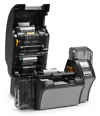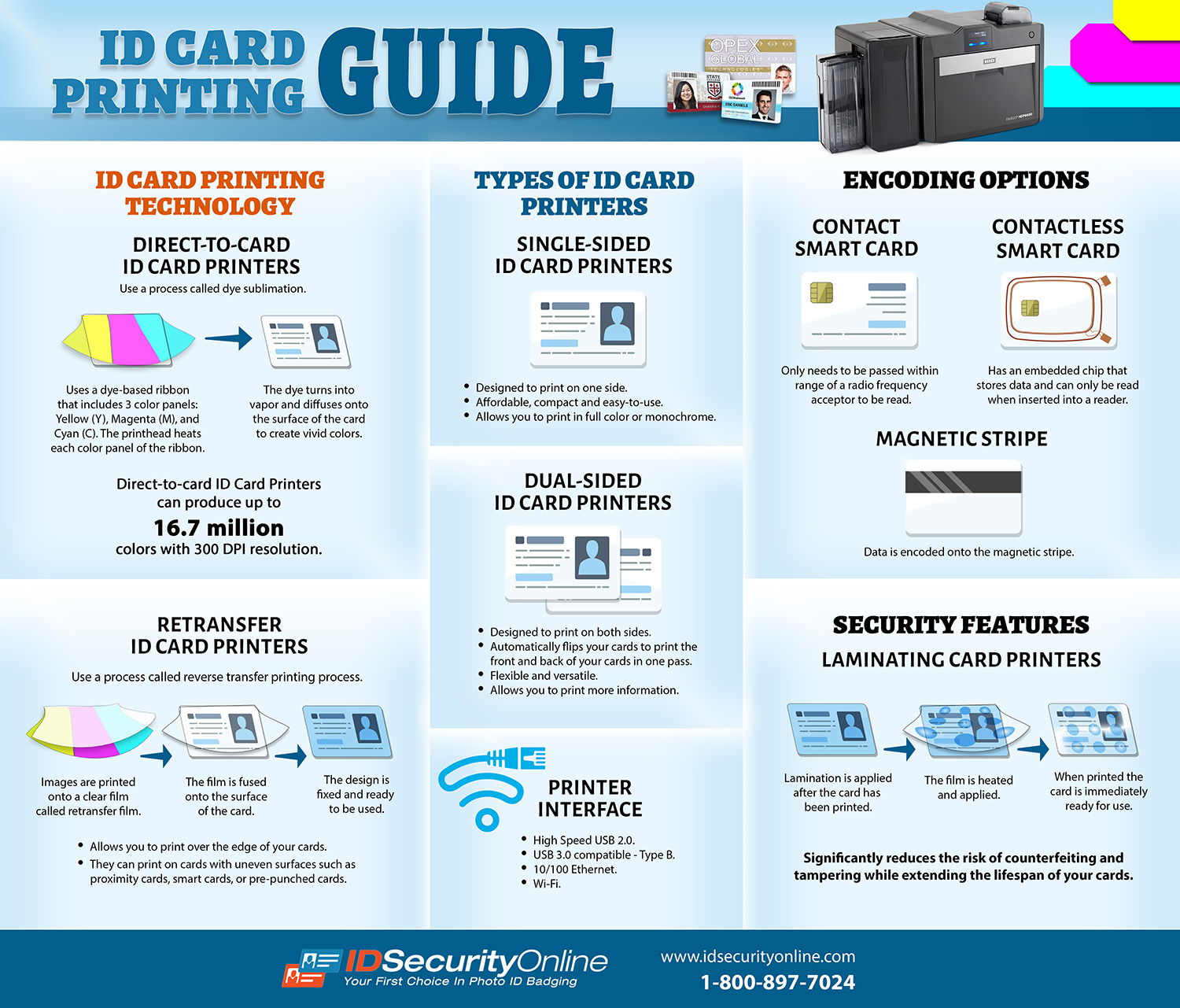ID Card Printers Guide
IDSecurityOnline offers a wide range of ID card printers from all major brands such as Zebra, Fargo, Evolis, Datacard, Magicard and Nisca.
ID card printers provide a simple yet affordable way to print all your ID cards and badges on demand. Let us guide you to help you find the right ID card printer for your needs.
-

Extend the Life of Your ID Card Printer
Since all printer users and circumstances are different, manufacturers can’t state how many cards their printer is expected to print over its lifetime or how long it will last.
-

How Long Should My ID Card Printer Last?
The life expectancy of ID card printers can vary widely based on several variables that affect their performance.
-

When Traveling With Your ID Card Printer
Depending on how you’re traveling with your ID card printer, you may need either a hard-sided or soft-sided case to protect your printer.
-

What’s the Difference Between Overlays and Laminates?
During your research into an ID card printing system, you may have come across overlays and laminates that can be added to cards for extra protection and another layer of security.
ID Card Printing Technology
Direct-to-card ID card printers
Use a process called dye sublimation. This process uses a dye-based ribbon that includes 3 color panels: Yellow (Y), Magenta (M), and Cyan (C). When a card in inserted into the printer, the printhead heats each color panel of the ribbon. Because of the heat, the dye turns into vapor and diffuses onto the surface of the card to create vivid colors. Direct-to-card ID card printers can produce up to 16.7 million colors with 300 dpi resolution.
Most dye-sublimation ribbons also include a black (K) panel that is a black resin panel used to print barcodes and text in real black. Some ribbons also come with an overlay (O) panel to apply a clear protective layer on your cards.
Retransfer ID card printers
Use a different printing process to print ID cards. The card images are printed onto a clear film called retransfer film that is then fused onto the surface of the card. This process allows you to print "over the edge" of your cards, which means that you won't have a white border around your printed cards. The result is stunning: superb, vivid colors for high-quality badges.
Retransfer ID card printers can print on cards with uneven surfaces such as proximity cards, smart cards, or pre-punched cards.
Types of ID Card Printers
Single-sided vs. dual-sided
- Single-sided ID card printers are designed to print on one side of your cards. Affordable, compact and easy-to-use, single-sided ID card printers allow you to print all your cards and badges in full color or monochrome.
- Dual-sided ID card printers are designed to print on both sides of your cards. A dual-sided printer will automatically flip your cards to print the front and back of your cards in one pass. Flexible and versatile, dual-sided ID card printers allow you to print more information on all your cards and badges.
Encoding options
If you need to encode data on your cards, you have several options:
- Magnetic stripe ID card printers: choose an ID card printer with a magnetic encoder to print and encode data on cards with a magnetic stripe.
- Contact Smart card ID card printer: contact Smart cards have an embedded chip that can only be read when inserted into a reader. Card printers with a contact Smart card encoder will allow you to store and read data on these cards.
- Contactless Smart card ID card printer: these cards do not need to be inserted into a device to be read. To read and store information in the chip, contactless Smart cards only need to be passed within range of a radio frequency acceptor - the range of operation depending on the acceptor but being usually from about 2.5" to 3.9".
Security features
If you need highly-secure badges, you might consider laminating ID card printers. These printers include a lamination module to add a clear or custom patch or film to your printed cards. Laminating your cards significantly reduces the risk of counterfeiting and tampering while extending the lifespan of your cards.
Retransfer ID card printers are the only printers that offer "over the edge" printing for unmatched print quality. Retransfer ID card printers are also widely used to print on uneven surfaces such as proximity cards, smart cards, or pre-punched cards.
Choosing the Right ID Card Printer
Do you need to print on one side or both sides of your cards?
If you are planning to print on one side of a card, choose a single-sided ID card printer. Compact and easy-to-use, single-sided card printers are perfect to print basic visual IDs. Print your logo, the cardholder's name and picture, and even a barcode.
If you need to print on both sides, go for a duplex ID card printer. Duplex - or dual-sided - printers will automatically flip your cards to print on both sides in one pass. This option allows you to include more information to your cards such as a schedule for student IDs or contact information for membership cards.
Will your card printer be connected to a network?
Card printers come standard with a USB interface to connect your printer to your computer. However, if several computers need to access your card printer, you will need Ethernet connectivity. Some manufacturers offer USB and Ethernet as standard but some don't, so make sure to select a card printer with Ethernet if needed.
Do you need to store data on your cards?
If the answer is yes, you will have to choose a printer with the right encoder.
You have several options to add data to your cards:
- Magnetic cards: widely used for access control or time & attendance, magnetic encoding is an affordable way to create secure badges.
- Smart cards: if you need extra security or need to store more data into your cards, go with a printer with smart card encoder. If crowd control is an issue, RFID cards would definitely add convenience to your access control process.
How many cards will you print per year?
Entry-level printers are built to print up to a few hundred cards a year. If the amount of cards that you need to print is much higher, look for card printers that are designed for high volumes. A key component is the card feeder: when entry-level printers offer manual feeding or a 50-card input hopper, high-volume printers can include a feeder with a capacity of 500 cards!
Do you need highly-secure cards?
To reduce the risk of counterfeiting or tampering, go with laminated cards. Adding a clear or custom layer of protection to your cards will help you create highly-secure badges. Laminating card printers offer lamination on one side or both sides of the cards.




